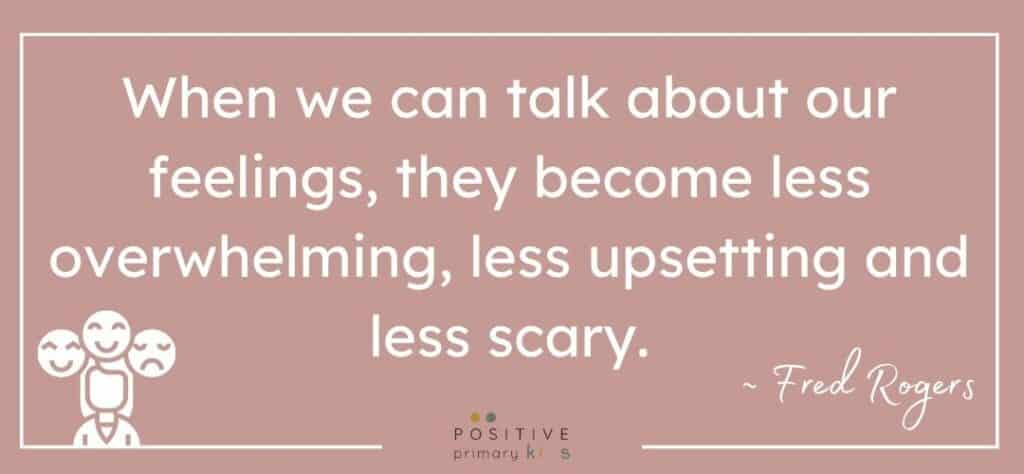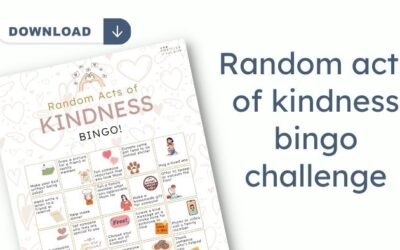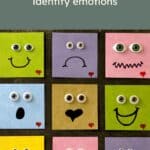From the moment we wake up to the moment we fall asleep at night, we experience a non-stop range of emotions. Some, like happiness or anger, are easy to recognise. Others, like jealousy or pride, are much more difficult to identify.
Identifying emotions can be hard! When kids experience big emotions without being able to understand them, let alone explain how they are really feeling, they act them out – often in inappropriate or unhelpful ways.
Helping children to identify emotions and name them develops their emotional awareness. It gives them the tools that they need to begin to demonstrate self-control and communicate their emotions healthily.
This is the second post in a series devoted to introducing emotional literacy. You can read the first post here: What is emotional literacy? An introduction to helping children understand emotions
Affiliate Disclosure: This post may contain affiliate links. This means that I may receive a small commision – at no cost to you – if you make a purchase through these links. Thank you for your support!
What are emotions in simple terms?
There are several theories around how we experience emotions, but broadly speaking, an emotion is a mental state that gives us information about what we are experiencing and helps us decide how to react to it.
Here are a couple of relatable examples:
- You find a £20 note in the pocket of a jacket you haven’t worn for months – woohoo! Your body responds to this positive experience with the emotion of happiness.
- Walking home alone at night, you are sure you can hear footsteps close behind you, but when you turn around there is no one there. You respond to this potentially threatening experience with fear.
As individuals, our thoughts and previous experiences influence our emotions. For example, two people might be in the same situation – such as at the top of a rollercoaster – that makes one of them, who hasn’t been on the ride before, experience fear whilst the other experiences excitement because they are familiar with the ride and know what to expect.
Other ways that emotions vary between different people include:
- How quickly an emotion is experienced in response to stimuli
- How strongly it is felt
- How long it lasts for
- How long it takes to return to a neutral state
- How frequently a particular emotion is experienced
Often, we think about emotions as either ‘good’ or ‘bad’, but really, they are not positive or negative, they just… are! It’s how we express them that could be seen as positive or negative.
Emotions are incredibly important. They help us make decisions, take action, understand others and keep us safe from harm. Developing an understanding of our emotions helps us to identify them, accept them and communicate how we are feeling in a helpful and productive way.

Feelings vs. emotions: What’s the difference?
The words ‘feelings’ and ‘emotions’ are often used interchangeably and although they are very closely related, there are differences in their meanings.
It gets quite confusing, so in the most basic terms…
- Emotions are automatic responses to a situation or event (stimuli).
- Feelings are how we interpret our emotions as individuals. These interpretations depend on past experiences, personal beliefs and personality.
Can you identify your own emotions?
Before you start helping your child learn more about their emotions, it can be helpful to reflect on your own emotional literacy.
Set a stopwatch for 5 minutes and see how many emotions you can list. No googling! Ready? GO…
How many emotions did you come up with? Five? Ten? More than ten? Are they all emotions, or are some of the words you’ve written down feelings? It can get quite fuzzy, can’t it?
Some people spend years and years of their lives trying to understand and master their emotions. Developing emotional literacy is a process that takes time. It’s important to acknowledge that – especially in relation to supporting children’s understanding.
Helping kids identify emotions
We experience emotions from the moment we are born. Babies cry, use facial expressions or snuggle to express how they feel, but of course, they don’t have any understanding of why they feel a particular way.
As they grow, kids begin to develop their emotional awareness. They start to identify basic emotions and name them. Basic emotions include happiness, fear, sadness, surprise and anger.
When children are able to give emotions a name, they can begin to explain how they are feeling in words, rather than acting out or expressing them ineffectively or inappropriately.
For some children (and adults too!), understanding emotions comes more naturally than for others.
By supporting children to identify emotions we help them to:
- Express their emotions appropriately
- Improve relationships
- Make decisions
- Resolve conflicts (or avoid them)
- Know what they want (or don’t want)
- Move on from past difficult feelings
- Develop empathy
With time, children become more aware of their emotions, what causes them, and how they make them feel. As their emotional vocabulary grows, it becomes easier to communicate their feelings more precisely.
Final thoughts…
Helping kids identify emotions, learn emotional vocabulary and become emotionally aware has so many benefits. These are the first steps toward emotional literacy, which influences wellbeing, happiness and future life satisfaction and success.
Remember to be patient as your child learns about emotions. Make sure they know that you value their efforts and appreciate that emotional awareness takes time experience, practice and time.
Keep an eye out for the next post in this series which will include activities to help children learn to name basic emotions.
Would you like some printable affirmations? They’re free!
- The Science of Emotion: Exploring the Basics of Emotional Psychology – University of West Alabama]








0 Comments